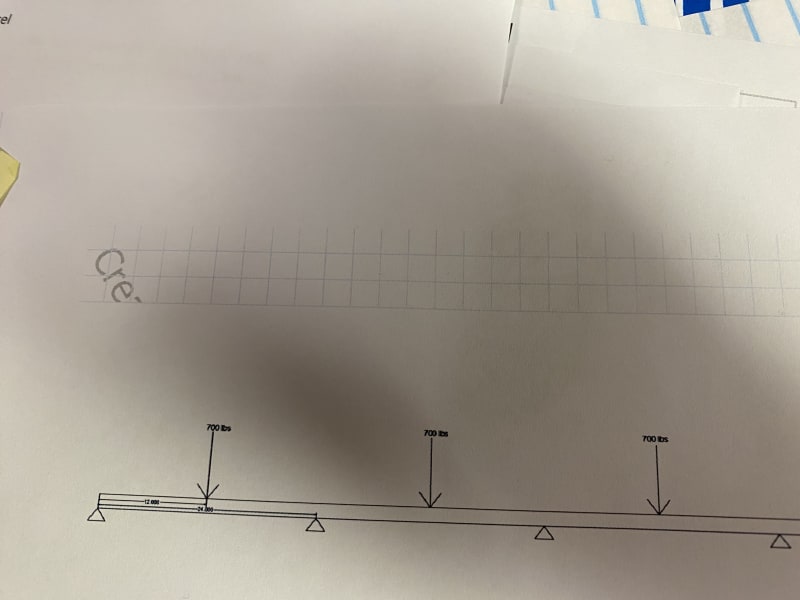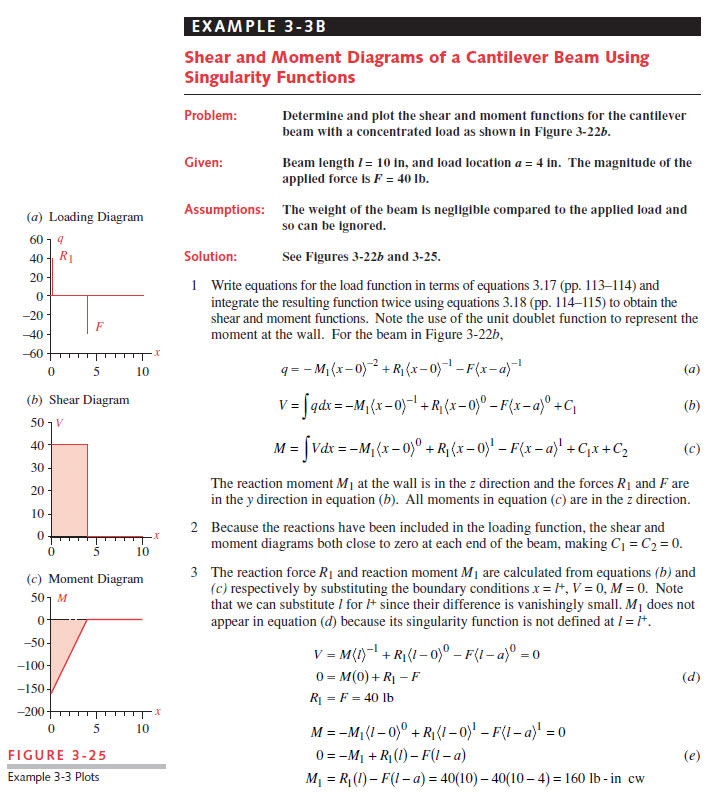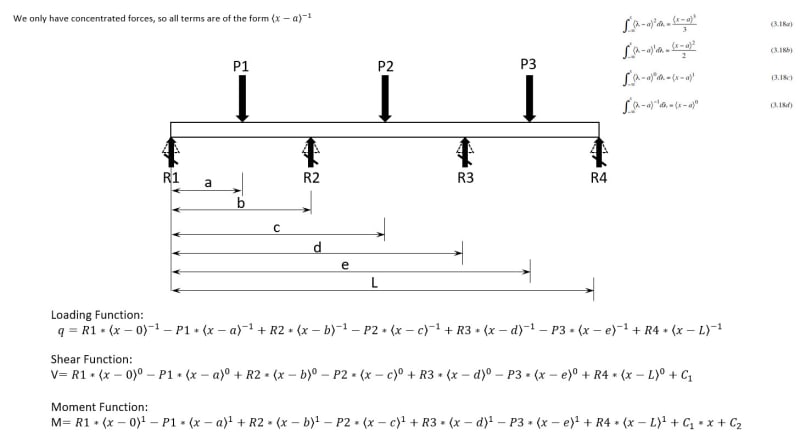To me, it seems the conditions of static equilibrium still have to apply even if the beam bends slightly (for accurate moment calculations the displacement just has to be much less than the lever arm distance used to calculate moments, which is 12" or more... so it doesn't seem unreasonable). We assume the applied forces are live forces that remain the same regardless of the deformation. As rb mentioned it's shown as simply supported, so there's no moment created by the supports at their own location.
Let me begin an attempt at what I think would be the solution:
Define positive direction for applied forces F as down and positive direction for reaction forces R1, R2, R3, R4 as up.
Distance between supports is L and force is applied at midspans.
The sum of vertical forces must be zero. Up = Down
R1+R2+R3+R4 = 3*F
moment about the location of R1: CW = CCW
F*(L/2+3L/2+5L/2) = L*(R2+2*R3+3*R4)
moment about the location of R2. F spaced at L on each side cancels out. CW = CCW
R1*L +F*3L/2 = R3*L + R4*2L
moment about the location of R3. F spaced at L on each side cancels out. CW = CCW
R1*2L+R2*L = R4*L + F*3L/2
moment about the location of R4. CW = CCW
L*(3*R1 + 2*R2+ R3) = F*(5L/2 + 3L/2 + L/2)
5 equations to solve 4 unknowns. One equation left over to check the solution.
Am I wrong? Or did I say the same thing as whatever rb1957 said? (the only part I recognize is that it's still a 4x4 system to solve)




